In everyday life, tenses are the sole distinction between throws and throws in Java. However, these two are significantly distinct and are employed for various activities in the computer language Java. The Java language’s exception handling uses the terms throw and throws in java.
The ‘Throw’ is a keyword used to give an instance of exception explicitly in the program that the programmer has manually created to JVM whereas the ‘throws’ is a keyword used to give the responsibilities of exception handling, occurred in the method to the caller method. Let’s deep dive into the major difference between throw and throws in detail.
Learn about the following in the upcoming sections:
| Table of Content |

POSTGRADUATE PROGRAM IN
Multi Cloud Architecture & DevOps
Master cloud architecture, DevOps practices, and automation to build scalable, resilient systems.
What is Throw?
To throw the exception explicitly from the method or any other piece of code, utilize Java’s throw keyword. Either a checked or an unchecked exception may be thrown. Throwing custom exceptions is the major use of the throw keyword. The throw keyword is useful when you wish to raise an exception in your code depending on specified criteria.
Throw Syntax

For example:
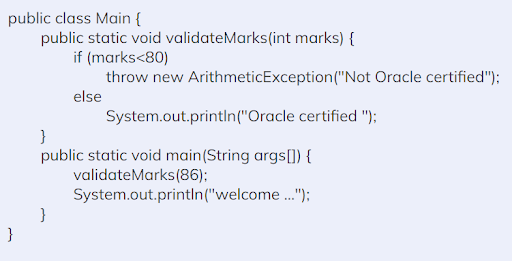
Output:
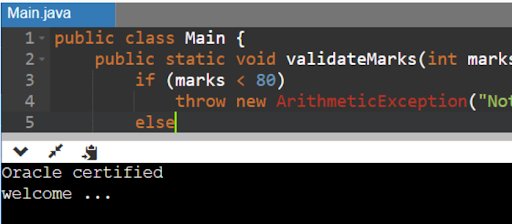
Explanation:

The validateMarks() function, which accepts an integer value as a parameter, was developed in this example. If the grade is less than 80, the Arithmetic Exception exception is thrown; otherwise, the message stating you are an Oracle-certified professional is printed.
Throw Examples
Here is an example of throws in Java:
|
If the balance in the code above is lower than the withdrawn amount, the term Throw is used to raise an InsufficientBalanceException. The caller code will handle the Exception in a “try-catch” block. You will then get an error notice that reads, “You have insufficient balance,” once you have completed this.
What are Throws?
The throws keyword is used to throw an exception object implicitly. The method signature uses the throws keyword. It is possible to define several exception types in a method signature, which should be comma separated. The method is not responsible for handling the Exception when the Throws keyword is used to specify a method. However, it gives it to the caller code instead. The caller code must either declare the Exception in its method signature utilizing the Throws keyword or manage it using a “try-catch” block.
Throws Syntax
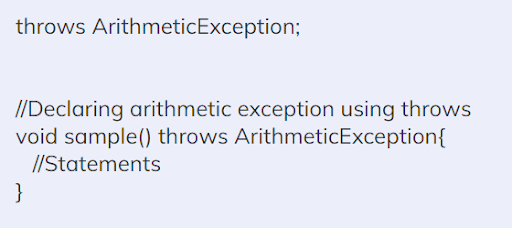
For example:
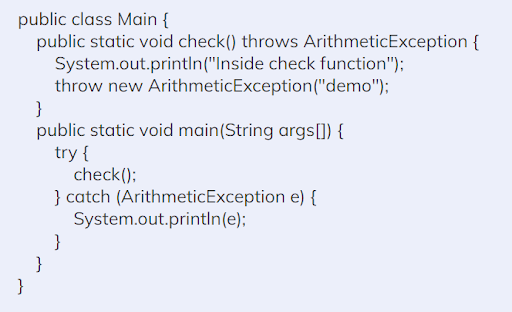
Output:
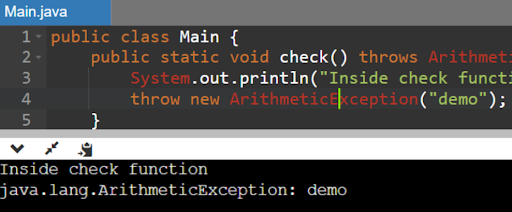
Explanation:
In this case, the programmer explicitly declares that the code may be dangerous by throwing an exception within the procedure. If the file described above is not created initially or gets deleted, the programmes above will throw an exception.
Throws Examples
This is an example of throws in Java.
|
The Throws InsufficientBalanceException method signature in the code example above indicates that the withdraw method may throw an InsufficientBalanceException. The throwing code must either declare the Exception in its own method signature using the throws keyword or catch it using a try-catch block.
Differences Between Throw and Throws
Here is the key difference between throw vs throws in detail:
| Parameter | Throw | Throws |
|---|---|---|
| Definition | The throw keyword in Java explicitly throws an exception within a method or block of code. | To define an exception that the function may throw during code execution, the Java throws keyword is used in the method signature. |
| Type of Exception | Only unchecked exceptions may be propagated using the throw keyword; checked exceptions cannot be propagated only using throw. | We may specify both checked and unchecked exceptions using the throws keyword. Throws may only be used to propagate verified exceptions, though. |
| Syntax | An instance of the Exception to be thrown is placed after the keyword throw. | The class names of the exceptions that will be thrown are listed after the keyword throws. |
| Declaration | The approach makes use of throw. | The method signature includes throws. |
| Internal implementation | Only one Exception may be thrown at a time; multiple exceptions are not permitted. | The throws keyword allows us to specify several exceptions the method may throw. Main(), for instance, can raise an IOException or SQLException. |
| Point of Usage | In a function, the toss keyword is utilised. When it is necessary to throw an exception logically, it is utilised. | The function signature makes use of the throws keyword. It is utilized when a function contains statements that might result in an exception. |
| Propagation of Exceptions | Checked exceptions cannot be propagated via the throw keyword. Only unchecked exceptions not checked using the throws keyword are propagated using it. | Only checked Exceptions can be propagated using the throws keyword. |
| Best practices | Throw a certain exception type without fail: It’s preferable to throw a more particular exception that precisely identifies the issue that happened instead of just throwing the general Exception class. Doing this makes it simpler for other programmers reading your code to comprehend what’s going on and how to handle the Exception. | Declare checked exceptions only if the procedure is incapable of handling them. The “throws” keyword should be used to declare an exception that a method can’t handle. However, catching the Exception and handling it within the method is preferable to declaring it with “throws” if the method can handle it. |
| Common use cases | You might use “throw” to create an exception while verifying input from a user or external system if the input is incorrect. You may throw an IllegalArgumentException and provide an error message, for instance, if a user attempts to provide an incorrect email address. | You could use “throws” to denote the exceptions that a method can throw while developing an API. As a result, it will be simpler for other developers utilising your API to comprehend what exceptions could be raised and how to manage them. |

Also read about : Types of Inheritance in Java
Difference Between throw and Throws with Examples
There are many differences between throw vs throws keywords. Differences between throw and throws examples are given below:
Examples of Java throw
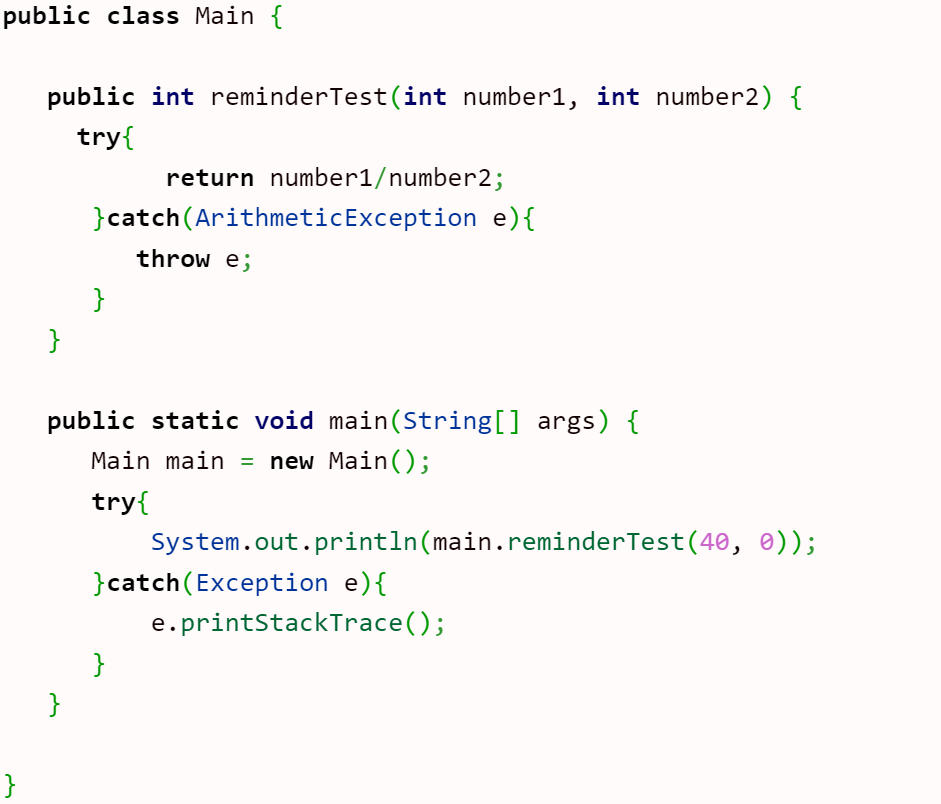
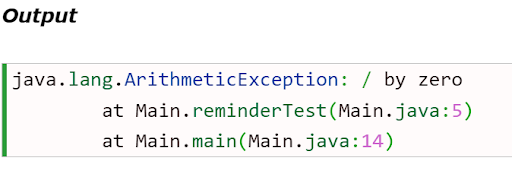
Examples of Java throws
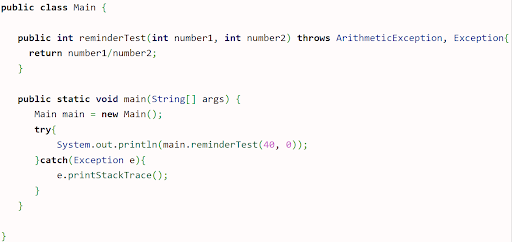


82.9%
of professionals don't believe their degree can help them get ahead at work.
Use of Throw and Throws in Java
There is various difference between throw and throws in java in terms of their uses. The terms throw vs throws in Java both have to do with managing mistakes and exceptions, although they serve distinct functions:.
- Throw: To create an exception or error in a programme, use the “throw” keyword. If an error condition is found, it is utilized within a method to throw an exception. For instance, a method can use “throw” to create an exception and notify the method’s caller if it gets erroneous input from a user or external system.
- Throws: The exceptions that a method may throw are listed using the “throws” keyword. It serves as a reminder in the method signature that the method is capable of throwing one or more different exception kinds. This enables the method’s caller to prepare for any exceptions and handle them correctly. For instance, if a method does an action that could cause a checked exception, it should use “throws” in its method signature to indicate the Exception.
Read: Java Operators
Throws vs Throws: How to Choose between Throw and Throws?
The following criteria will assist you in deciding between throw vs throws in Java:
- When you wish to create an exception or error in your code, use the “throw” keyword. When an error situation has been found, and you want to alert the method’s caller, you would use the word “throw” within a method.
- When you wish to list the exceptions that a method may throw, use “throws.” To indicate that the method may throw one or more different sorts of exceptions, you would include the word “throws” in the method signature. This enables the method’s caller to prepare for any exceptions and handle them correctly.
Purpose of Error Handling in Java
Error handling makes it possible to handle hardware and software problems gracefully and enables interrupted execution to continue. Either the programmer creates the appropriate codes to manage issues or uses software tools to handle errors when it comes to error handling in software. When mistakes cannot be categorized, they are often handled by returning unique error codes. For some applications, specialized programmes called error handlers can assist in managing errors. These programmes may foresee mistakes, assisting in recovery without terminating the programme.
Read about: Access modifiers in java
Conclusion
In this guide we have learned about the major differences between throw and throws in java. Developers may employ throws and throws in Java effectively to write Java code that is more durable, dependable, and simple to maintain. They are crucial for writing code that can successfully manage unforeseen circumstances and significantly manage exceptions and failures in Java programmes. Also check out Hero Vired Business Analytics and Data Science Course.
What are throw and throws in Java?
How is throw used to throw an exception in Java manually?
How are throws used to declare an exception in a method signature?
Updated on March 19, 2024
